
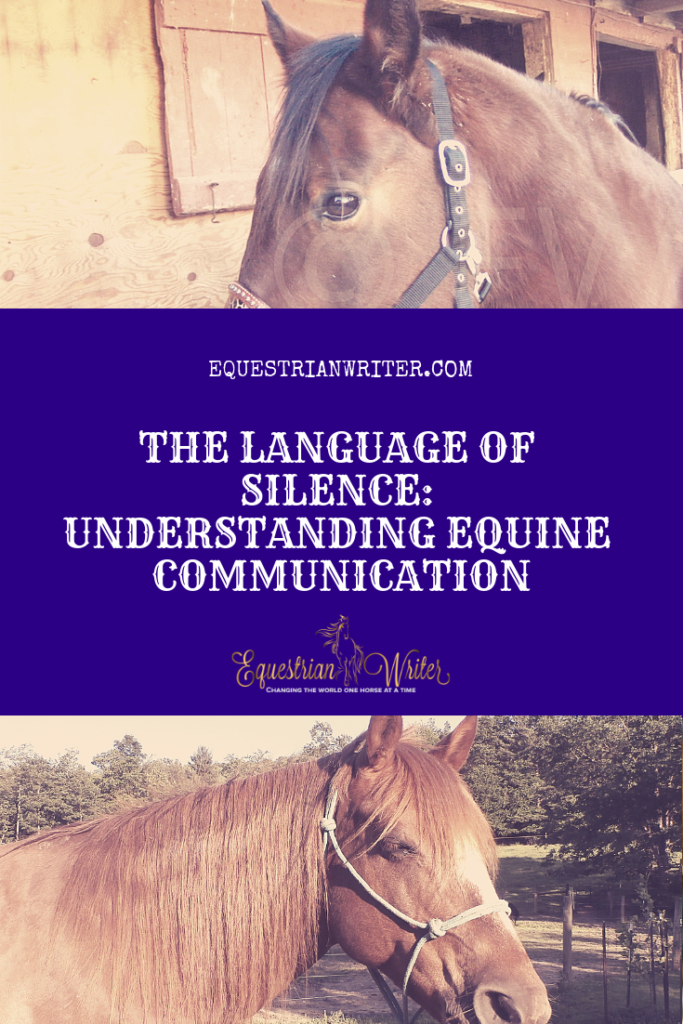
So often we forget that horses are non-verbal creatures. We teach them verbal commands like walk, trot, canter, and whoa. However, responding to verbal commands goes against their nature. In nature, noise attracts the attention of predators. So, for a prey animal like a horse, noise equals death. Silence is the key to survival. Therefore, silence is ingrained in their very nature. They trust silence. They shy away from noise.
For horses that are born into domestication, the adjustment to verbal commands comes early in life. Many are handled by humans even before they are weaned. Few make it through their first year of life without being introduced to the human propensity for verbal communication. But, what about the ones who never learn the basic verbal communication required by most human trainers? What about the horses that don’t understand anything other than their native language of silence? These horses often get labeled as dangerous, unpredictable, untrainable.
Undomesticated Instincts
The duality of a horse’s nature is fascinating. On one hand, they have been domesticated for generations. On the other hand they still maintain a remarkable amount of their natural instincts. Granted some express those instincts much stronger than others, but it is there–to some degree–in all of them. The fight or flight instinct. An instinctual appreciation for the language of silence.
There are some horses that are labeled as “difficult,” “flighty,” and “unpredictable.” These labels often lead to one diagnosis; “dangerous.” But what makes a horse become that way? This comes down to the old nature versus nurture debate. Is it in their nature to be flighty and unpredictable? Was it the way they were raised? Can they be fixed?
As per usual, my opinion on this matter is probably a bit controversial. I believe that this is a matter of both nature and nurture. Let’s look at this realistically. This is a half ton animal we’re talking about. That’s 1,000 pounds (450 kg) of living, breathing, fight or flight instinct. This is an animal that is hardwired to survive at all costs. A tiny movement, the smallest sound, a flinch from a herd mate, all hardwired signals that meant one thing; run. Fight or flight. Survival. That is what we are fighting against every time we get in that saddle and voice our commands. We’re asking them to go against their very nature and then we label them as “bad” when they give in to their survival instincts.
Related Content: The Secret to a Soft Mouth
Bonding
I hear so many people talking about bonding with their horse. I see them talking to, hugging, and getting all up in their horse’s personal space. This type of bonding is touted as being the magical cure to fixing “dangerous” horses. Some horses will put up with this, others won’t.
If you observe horses interacting in a herd–even an artificial domesticated herd out in a pasture–you will see that they usually give each other ample space. At times you will see them standing quietly side by side. However, they will do so respectfully. Two friends might groom each other a bit, stand side by side, nose to tail so they can help each other keep the flies away or share body heat in the winter, but they never crowd each other. They won’t be hugging all over each other and if one walks away the other won’t try to chase them down and bring them back.
This is the language of silence.
Learning the Art of Silence
Some horses deal better with verbal communication than others. My mare Moose, doesn’t really use much verbal communication. I can cluck to encourage more speed. That is about the extent of her verbal communication. Anything else is habit on my part which she puts up with but blatantly ignores. Moose is the one who taught me the true value of silence.
A Lesson in Silence
I got her as an unbroke 6-year-old with massive trust issues. She trusted no one. I couldn’t even reliably catch her in her 12 x 24 ft stall at first.
I tried bribes, talking to her, all the “right things.” It just scared her more. Finally I gave up and sat down on the ledge beside the hay feeder. I stayed there for half an hour. She came all of three steps closer. It was progress. The next day I brought a book and stayed for two hours. Now, she was really curious. She got a whole 5 feet out of her corner. It took her 2 more days and a total of 8 hours to make it 18 ft across the stall and into touching distance. Admittedly, it wouldn’t have taken quite as long if I hadn’t jumped that gun and tried to move towards her a coupled of times, causing her to retreat back into her corner. But, I learned and we got there eventually.
By the time she made it within touching distance I had finally learned to let her take her own time. It took a couple of tries for her to convince herself that I wasn’t going to try and touch her again, but she finally worked up the nerve to start sniffing me.
It took me another week to be able to reliably catch her in a 12 x 24 ft stall. It took three more weeks to be able to catch her 75% of the time in a 24 x 48 ft paddock. 4 years later and I can catch her easily in the paddock 95% of the time and out in the 3 acre field 75% of the time.
The Value of Time
Moose and I have a very different relationship than I have had with any other horse. She doesn’t particularly like most people. I would like to say that I have some magical bond with her that makes me special, but that would be a lie. The foundation was laid in those first days spent in silence in the stall followed by days in the round pen spent teaching her how to accept directional cues from a human on the ground. Finally we moved to under saddle work. She was terrified of the saddled and had never been properly introduced to a snaffle. The first time I got on she crow hopped and tried to stagger sideways into the fence. Frankly, it actually went better than I expected. She didn’t unseat me and all was well. She was resistant, bullheaded, and completely shut down. I chipped away at her walls, but it was slow going.
But that relationship didn’t really begin to take root until three months in. There was a freak pasture accident and Moose’s left eye was damaged. We rushed her three hours to the New Bolton Center for an emergency corneal transplant. When she came home, she was on stall rest with a catheter in her eye and meds every 4 hours around the clock. Needless to say, we spent a lot of time together. I would take her out and hand walk her. She was suddenly dependent on me for everything. I had to guide her around obstacles, show her where to step over things, help her relearn where the edge of the hay feeder and water tub were, even help her relearn how to get around her own stall without bumping things. She was suddenly forced to trust me.
That incident is what really broke through her walls. She has only regained about 50% vision in her left eye, but it doesn’t seem to bother her. The change was not instantaneous, but that is where it really started.
Affection in Silence
There are those who might look at Moose and I and think my interaction with her to be distant and unattached. But just because I’m not loving on her with kisses and pets doesn’t mean I’m not showing my affection for her. I just show my affection in a way she understands and appreciates.
There is one mare in our little herd who she is particularly attached to, Pascal. I noticed that when Moose and Pascal stand together they would sometimes groom each other on the top of the neck and withers. Sometimes they would even just rest their heads on each other’s withers for a moment, leaning into each other. I decided to try the same thing with Moose as she did not appreciate receiving affection in the same manner as many other horses have learned to tolerate.
I casually reached up and started scratching her withers. She quickly leaned into the touch. I also found that she likes it when I just put my hand on her withers and lean against her. Most of the time she leans into me as well. It’s equine affection in the native equine language, the only language she really knows; the language of silence.
Related Content: The Conformation Decline of the American Quarter Horse
Nurture Compounds Nature
And here we are again, back where we started. Is it nature or nurture? Is it in Moose’s nature to resist human contact and reject verbal communication? Is it the neglect of her early years that pushed her down this path?
The nature for fight or flight is there in every horse. Even the best horses will give in to their base instincts if pushed far enough. Let’s look at two polar opposite horses as an example; Moose and Punzi.
Moose
Moose spent the first 6 years of her life being neglected. These were the prime years for mental development and shaped her view of the world. This neglect left her without the understanding of how to interact properly with humans that most horses get at a young age. Compounding that is the bloodlines she comes from. Her bloodlines are primarily Driftwood and King, which is to say, performance and working lines. I’ve heard Driftwood horses often described as a load of talent on a hair trigger. Many working lines are the same. They are not pets and are often one person horses. The horses are bred to work and perform, not cuddle in the back yard. This all describes Moose to a T and this is where the line between nature and nurture blurs.
Many of her more famous Driftwood relatives are known for being “quirky.” Whether they are hard to catch, one person horses, or buckers, they all seem to have their quirks. Moose, ever the drama queen, seems to have collected just about every quirk I’ve ever heard of a Driftwood having. Either way, her entire family tree seems to take a bit of a delicate touch. I imagine that attempting to kiss and cuddle the quirks out of most Driftwoods would be about as successful as it has been with Moose and they can’t all have been left neglected in a pasture for the first 6 years of their lives.
Punzi
On the other hand, there is Punzi. She spent most of her life as a kid’s pony and a broodmare, so she is quite accustom to the ramblings of human verbal communication.
She is registered, but her linage is nothing very impressive. She has a little Poco Bueno, but it’s far enough back to be pretty common. It takes 4 generations before any names of note show up in her linage. She would be categorized as a Poco Bueno since that’s really the only thing of note on her pedigree. She’s not performance bred. Rather, she’s of the back yard, couch potato variety; happy to tote around green riders and not particularly motivated to learn anything too complicated.
It is in her nature to be lazy and unmotivated, unwilling to put in more effort than she has to. This was nurtured by an upbringing around children and green riders.
The Impact of Nurture on Nature
How would Punzi and Moose have turned out if their circumstances had been switched? Would Moose be a lazy kid’s pony and Punzi a distrusting, quirky, mess?
I can say with absolute certainty; no, that would never be the case. Punzi might be skittish, but she is lazy by nature. She may have turned out a bit moodier and less cooperative, perhaps even lazier than she already is. However, I can hardly imagine a reality where Punzi would be a little firecracker on a hair trigger. Nor could I imagine a reality where Moose was a kid’s pony. I could, perhaps, imagine her being lead around and groomed by a child with adult supervision. She has become rather tolerant. But, Driftwoods are notoriously quirky with a penchant for bucking and Moose certainly lives up to the reputation. Neglect or no neglect, that is not exactly a recipe for a kids’ pony.
The Impact of Nature on Nurture
Herein is another complication that must be taken into consideration. The nature of the horse inevitably affects the nurture of the horse.
In the case of Moose, the reason she was neglected was because of her nature. The Driftwood propensity for bucking and other nasty quirks got the better of her, leaving her abandoned in a pasture to fend for herself. Similarly, Punzi’s gentle nature lead her to be trusted with green riders and children.
So, where does nature end and nurture begin?
A Balance of Communication
As humans, we’ve long since lost the instinctual appreciation for silence. The survival instincts that still flow so strongly in the equine gene pool have long been bred out of our own. So, it is no wonder that we find it so hard to relate on this level. Never mind the fact that we are a natural predator and they are prey. Yet another aspect of their nature we expect them to over come every day.
Horses like Moose may never fully adjust to verbal communication. The lucky ones will find someone willing to learn to speak with them in a way they understand. The unlucky ones will find themselves labeled as too dangerous and unpredictable to be handled.
Horses like Punzi will have an easier time adjusting. The ones that are more docile by nature won’t be so quick to become reactive around loud, expressive humans. These are the ones that will get the furthest in life.
We have to somehow find a balance between teaching a horse to live among humans and teaching humans to live around horses. It can’t all be one way. While we should not judge a horse by it’s linage, there is still a certain amount of it’s nature that can be told through genetics. That nature must be accounted for. Moose will never be a backyard trail pony just as Punzi will never be an athletic, motivated performer. It is not in their natures. It is not what they were bred for. Their natures can be improved upon through proper nurturing, but there is only so far they can be pushed.
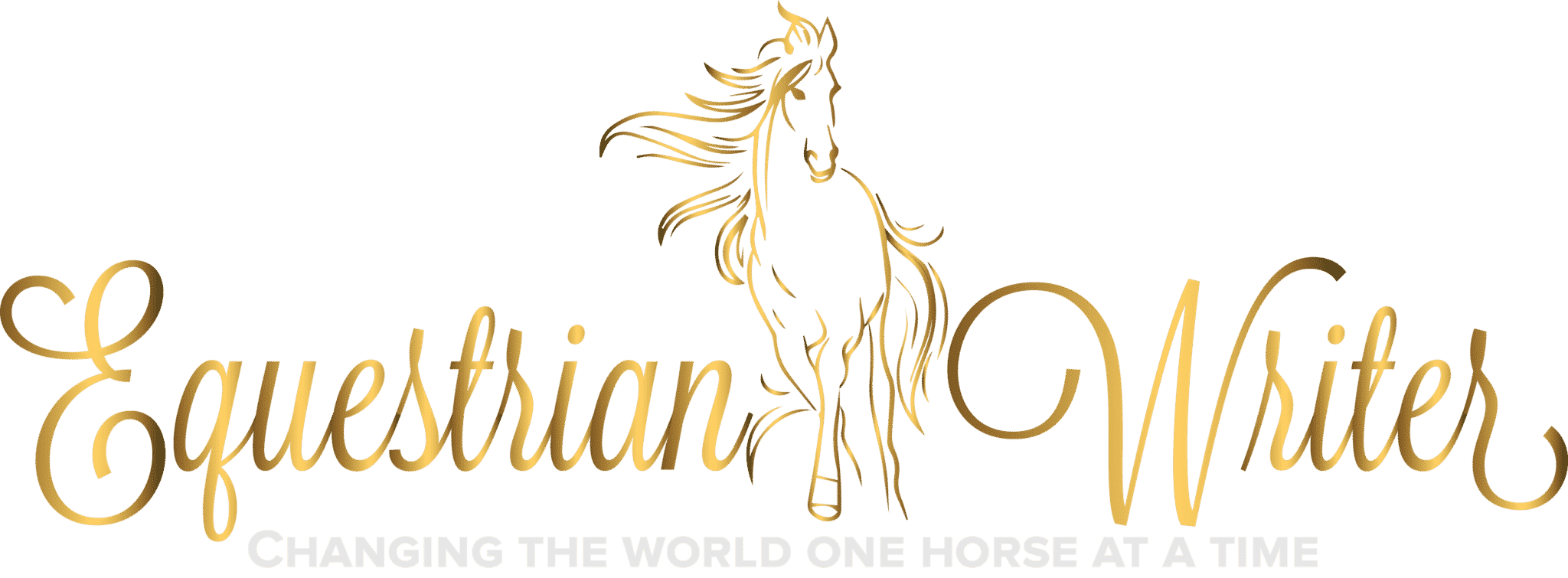





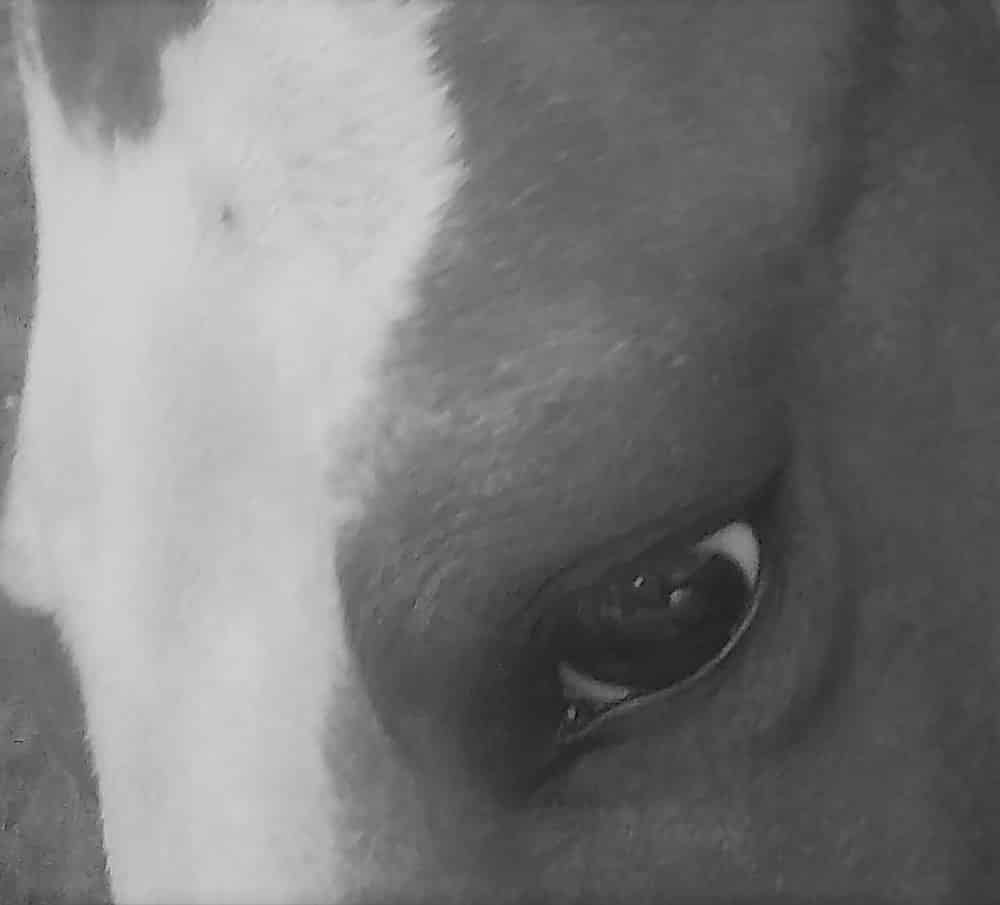
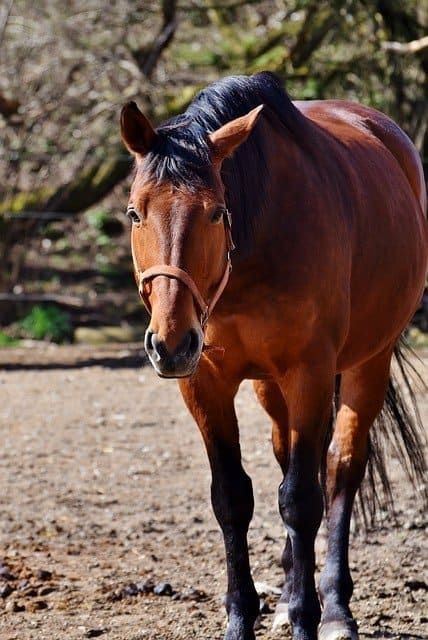

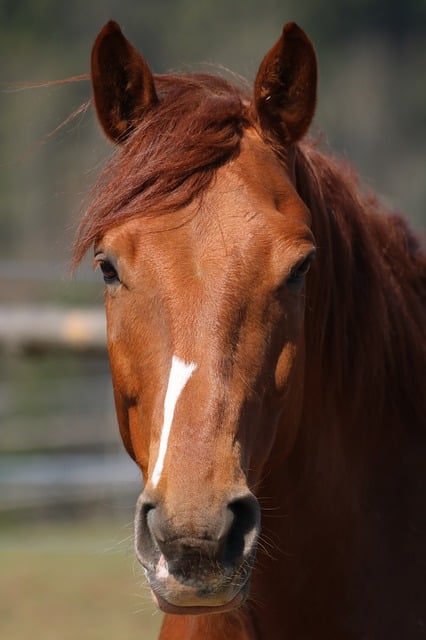
Thank you for this very informative, from the horse’s viewpoint, article. I am on the quest to “talk” horse (non-verbally) and this article was right on.
For me, the whole “nature versus nurture,” is summed up this way: “Genetics is the slate upon which environment is written.”
I have found in dogs, which I have lived and breathed for all of my 71 years, that many of the breeding choices made by show breeders have been the ruination of many breeds. The easy-going dog is not the easiest one to find these days….definitely possible, but don’t assume it from show lines. Now I choose the quietest pup who picks me.
If you have a blog, I would love to be on your mailing list.